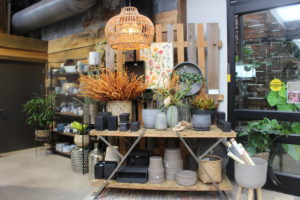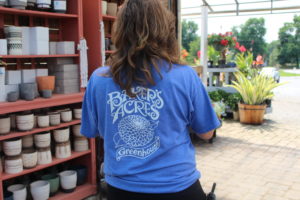Battling The Big Boys: Rules Of Engagement For Independents
As another spring rush enters the books, how is your season looking? Whatever you are experiencing, chances are good that as an independent your season is being affected by mass market outlets in your area.
I confess to having mixed feelings about the current state of our industry. Making a living growing plants is wonderfully satisfying; however, it’s more challenging than ever to make ends meet in today’s ultra-competitive marketplace. A relentless squeeze on profit margins is causing us to accept with much frustration a feeling of being trapped in a spiral of working harder than ever yet making less.
A Maturing Industry
The current generation of big box stores settled into my area of eastern Massachusetts in the mid 1980s. For several years after their arrival and up until our economic recession of the early 1990s, they did not affect our retail business to any measurable degree. In presentations on the topic of retailing and marketing, I describe those days as the “late, great 80s.”
What I’d give to run my business during a time like that again. We couldn’t grow enough to satisfy demand and prices easily outpaced inflation. While some keep hoping for a return to the good old days, others among us are embracing changes that will ensure healthy futures for our businesses. In the spirit of change and future success, here are a few rules of engagement for battling the big box stores.
Rule 1: Toss Those Tinted Lenses
As the recession of the 1990s lingered into the middle of the decade, things changed. I still don’t know exactly what happened, but during those years, our course for the future was recharted. The part that still frustrates me is that the future of my business was decided without my input. Even today as the dust settles on the market share picture between mass market and independent, I feel a bit helpless. I feel my future relies more on reacting to the marketplace rather than acting ahead of it.
I remember saying during the late 1980s the mass market wasn’t a threat to our business and exceptional quality and service would carry us into the future. I and other independents felt we had a pretty good formula for success, a formula not transferable to the big boxes. Did you feel a quiet confidence during that period? Some of us flexed our confidence by stating that, eventually, after the mass market created new gardeners, some would outgrow the mass merchant and come to us for a higher level of quality, assortment and service.
That reasoning may still be true. However, as the mass market matured over the years, it has taken more customers from me than it has delivered to me. The term describing this phenomenon is an eroding customer base. I encounter more and more independents these days experiencing this in their operations. Here’s another way of describing what’s happening: Once customers arrive at my greenhouse, they enjoy shopping and usually spend more money than they planned. The problem is there are fewer and fewer cars turning into the parking lot each season.
Be careful not to let those tinted lenses fool you on this next point either. Little by little, season by season, I have watched the quality of plants in the big box stores improve. As a researcher and educator, I applaud our wholesale growers for the job they are doing. When the delivery truck unloads at these stores, many independents now accept that the quality coming off the truck at the boxes can be comparable to their own. A decade and a half ago, we denied this statement and were correct.
Don’t kid yourself into believing you’re the only one who can raise a geranium, bedding plant or hanging basket. An exclamation point on that thought is in order. Nor are you and I the only ones learning to use perennials or woody plants in mixed containers either.
Our industry is in the midst of a monumental transformation. The traditional art of growing quality plants is evolving into hard science. We’ve done so well, in fact, in applying knowledge that, in my opinion, we have learned how to grow plants faster than we have learned how to sell them (there’s a fabulous topic for another day).
Rule 2: Bear Down To Beat Them
Are you willing to fight for your business? If you are, consider the following as a strategic advantage. Do you think the CEO or CFO of a big box store is going to be found working on the store floor? What an advantage we have as independents. We spend all of our time in the retail area watering, stocking, assisting customers, checking them out and answering questions. We don’t just work in our businesses, we live in them! The big box stores are also improving the level of customer service they offer. Again, don’t be blind to this. They will improve. Our job is to maintain enough separation so we are always viewed as the leaders. This means working hard to be exceptionally nice on that busy May weekend when 10 things need to be done yesterday and there’s only enough time to do one.
Back to the narrowing of the plant-quality gap, there are some traditional crops I simply cannot raise significantly nicer than wholesale growers any longer. It’s been difficult, but I’m trying to learn which crops have grown on my benches for decades that may not have a profitable future in my product mix. I reshaped my business model from growing any plant any customer may want into one of growing a unique assortment of complementary plants customers won’t find elsewhere. I believe my future lies in steering the business away from being all things to all people and toward being a specialized plant boutique.
While the mass market continues to get better at doing some of the things we’ve historically done well, we can still co-exist. My choice is to avoid battling on their terms and price. Geraniums will still be part of my mix, just not in plentiful numbers as in the past. Instead, I’ll reduce the numbers of commodity crops to the point where my customers will fight over them. That way, supply and demand will allow the price and profit to rise. The boutique analogy helps guide me now. Instead of battling the mass merchants by selling jeans and casual wear, I’m selling designer outfits and upscale accessories.
Rule 3: Small Fish Move Fast
Earlier I expressed frustration in realizing my business was reacting instead of acting. Well, that can be changed. After all, isn’t it said that small fish survive in the same water as large predators because they learned to swim faster?
Learn to grow crops that are too hard for others to grow. Then stay ahead by learning to let go when you sense the market is ready to exploit them. Move on to the next generation of new crops to avoid battling in the commodity arena. Economists tell us that every product eventually finds its way to this arena. That’s a sandbox we won’t survive in. Stay out of it and build your own sandbox that’s smaller and more inviting. Embrace the boutique model and differentiate yourself into a value-added, niche marketer.


















 Videos
Videos





